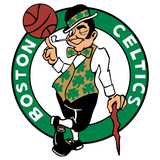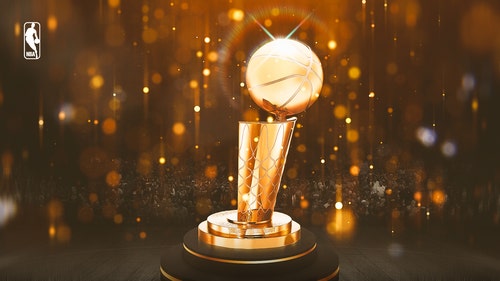
4 ways the Boston Celtics can finish off the Atlanta Hawks

On Friday morning, the Boston Celtics were a lame duck. With Avery Bradley effectively ruled out for the rest of their first-round series against the cohesive and red-hot Atlanta Hawks -- and Kelly Olynyk’s shoulder still bothering him -- Boston limped into what most believed to be the final weekend of its season.
Instead, behind Isaiah Thomas’ offensive brilliance and Marcus Smart’s defensive tenacity, the Celtics protected home court and tied the series with two incredible performances.
Moving forward, how can the battered Celtics win at least one game in Atlanta to pull off an upset nobody thought possible 72 hours ago? Here are four ways Boston can give itself a chance:
The Celtics relied on depth all season long, but with Bradley out and Olynyk a shell of himself, head coach Brad Stevens needs to lean on those who’ve already showed they match up well against Atlanta.
The seven players that need to carry Boston through to the other side are: Isaiah Thomas, Marcus Smart, Jae Crowder, Amir Johnson, Evan Turner, Jonas Jerebko and Terry Rozier.
The most obvious cut is Jared Sullinger, who should only play if Johnson or Jerebko find themselves in early foul trouble. He’s been terrible on both ends throughout the series, averaging 4.8 points and 5.0 rebounds per game. His PER is 5.2 and he’s only attempted one three.
Heading into the playoffs, Sullinger was primed to have a positive impact on the offensive glass, but he’s only grabbed five Celtic misses in 62 minutes. He can’t guard Al Horford or Paul Millsap, has more turnovers than free-throw attempts and is shooting 28.6 percent from the floor.
The Celtics need as much athleticism as they can find, which is why Rozier is here to spell Thomas and/or Smart in the backcourt. If nothing else, Rozier can pester Jeff Teague and Dennis Schröder as they bring the ball up the floor. He’s also knocked down three triples and has only one turnover. The rookie hasn’t necessarily earned playoff minutes, so much as Boston simply needs another guard on the floor whenever Thomas or Smart look like they’re about to pass out. But Stevens must be thrilled to have him available.
This bleeds off the reason above, but Stevens must continue to exploit the obvious advantage his team has whenever they go insanely small.
Their two most successful lineups feature Crowder at power forward, with either Johnson or Jerebko at center. Somehow, both units have been great on defense, particularly the glass. Why? How?

The most popular reason is Smart, who singlehandedly put out Millsap’s brush fire in the fourth quarter of Game 4 by contesting every shot, boxing out and not allowing the stronger, taller All-Star forward to bully him on the block.
It was a virtuous performance that highlights Smart’s incredible value. For all his offensive woes, the second-year guard has already established himself as one of the best perimeter defenders in basketball, and in this series he’s showing everyone just how critical defensive versatility can be.
There’s a good chance the Hawks go away from that matchup if/when it presents itself again, and when that happens the Celtics need to hope Al Horford’s groin is still taking its sweet time to heal:
Atlanta still has a more talented team, and on paper it should bludgeon Boston on the glass and in the post. But health has suddenly become a big factor on both sides, and the Hawks have yet to find an answer whenever the Celtics go uber-small.
It sounds cliche -- because it is -- but the Celtics need to keep their foot on the gas when driving to the basket. No playoff team is averaging more shots within five feet of the rim than Boston (36.5 attempts per game), and the biggest difference between their wins and losses is their ability to finish once they get there.
In Games 3 and 4, the Celtics shot 57.3 percent within five feet of the basket. In Games 1 and 2, they shot just 42.3 percent. The first number is about league average, nothing special but pretty good relative to the volume. The second number is a deplorable embarrassment. Not only do you miss the shot, but layups that don't fall contort the offense's floor balance, and allow easy opportunities in transition the other way.
In two wins, Atlanta scored a playoff-leading 17.5 fast-break points per game. In two losses (once the Celtics started converting their bunnies), the Hawks averaged five fewer fast break points per game.
Boston’s ability to finish around the basket has been one of the most meaningful indicators of its success, and it’s unlikely that changes before this series is over.
Isaiah Thomas turned this, right here, into a somewhat easy game-tying layup: pic.twitter.com/QrO0GNGT01
— Jay King (@ByJayKing) April 25, 2016
During the regular season, Atlanta was the fifth most accurate three-point shooting team (36.4 percent) whenever they hoisted one up without a defender within 4-6 feet.
They created more wide-open opportunities than any team in the league, by a mile, and the trend has carried over to the playoffs.
Unfortunately, the Hawks haven’t been able to take advantage of their great looks. They’re shooting 29.6 percent when a defender is between four and six feet, and just 27.9 percent when the shooter has a six-foot wide bubble surrounding him.
It’s a make-or-miss league.

To Boston’s credit, Stevens is giving Atlanta some of its looks on purpose. With no real rim protector ever in the game, it makes sense to go under every Schröder or Teague screen until they give up and settle for a pull-up three.
Thabo Sefolosha is not a threat, Kent Bazemore deserves a close out but won’t kill you, and Atlanta’s offense can do better than Millsap launching one up off the dribble. These are all shots the Celtics are happy to see, and the Hawks won’t win if they don’t make them, no matter who’s injured on the other side.




